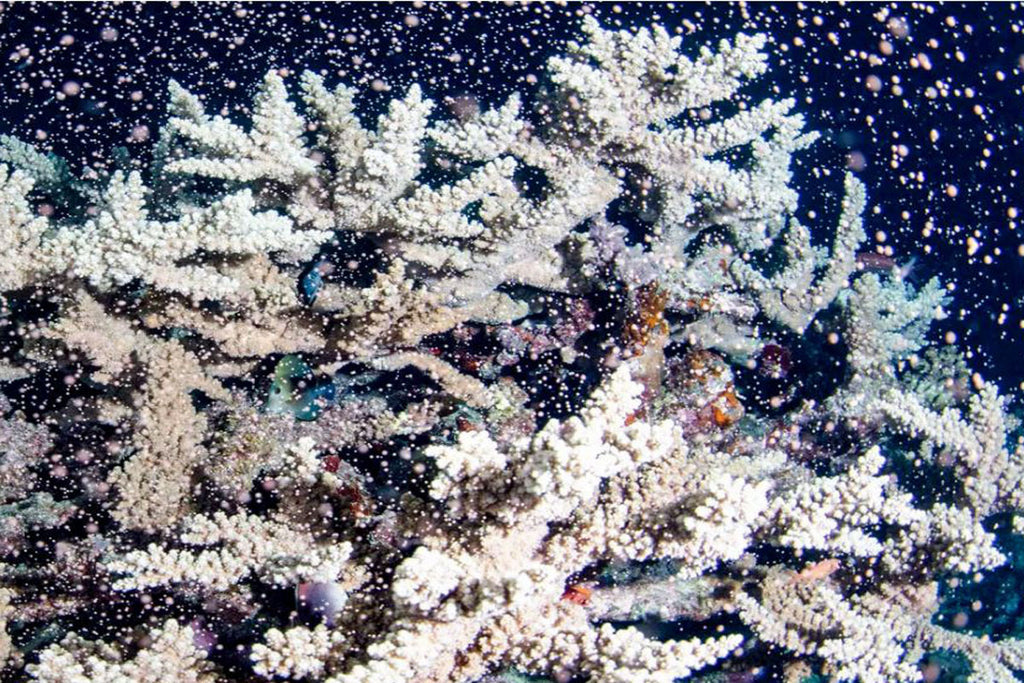How to Know When to Change your RO/DI Filters
- News
- 28 Dec, 2018
A RO/DI system is your aquarium’s best defense system, filtering harmful contaminates from entering your aquarium water. That’s why it’s so important to regularly maintain your RO/DI filters. The biggest challenge hobbyists’ face is not knowing when to change out their filter cartridges. But we have great news! Today we are going to show you how to properly monitor your filter cartridges to help you get the most out of your RO/DI system. The recommendation you hear most often in the hobby is to change your sediment, carbon and DI cartridges every 6-8 months and your TFC membrane every 2 years. While this is a good starting point, it can be misleading. The rate at which cartridges are exhausted actually depends on the level of impurities in your supply tap water, and how much water you produce using your RO/DI system.
We recommend you consider changing cartridges based on the gallons of water that has passed through them. For our standard 10-inch 1-micron sediment and 5-micron carbon block cartridges we recommend they are replaced every 6 months or 3,000 gallons, whichever comes first. For our RO Buddie sediment and carbon block cartridges we recommend they are replaced every 6 months or 1,500 gallons, whichever comes first. That being said, please remember the 3,000 and 1,500 gallon recommendations are based on the TOTAL AMOUNT of water that has been through your RO/DI system, not just the filtered water produced. Most RO/DI systems on average have a 1:3 ratio of filtered water to waste (reject) water, so that means for every 20 gallons of filtered water made 60 gallons of waste water is also used.
For standard 10-inch sediment and carbon block filter cartridges rated at 3000 gallons that means you need to change every 6 months if making 30 gallons of filtered water and 90 gallons of waste water per week, 120 gallons total:
3000 gallons / 120 gallons per week = 25 weeks / 6 months
For our RO Buddie filter cartridges rated at 1500 gallons that you need to change every 6 months if making 15 gallons of filtered water and 45 gallons of waste water per week, 60 gallons total:
1500 gallons / 60 gallons per week = 25 weeks / 6 months
The TFC membrane is the heart of your RO/DI system. It removes 95-98% of the impurities from water passing through it. With proper care a TFC membrane will last anywhere from 1-2+ years. However, they are sensitive and can be easily damaged. Running hot water accidentally through the system, allowing the system to freeze or the membrane to dry out are the most common reasons why TFC membranes fail. Your membrane may also clog and perform poorly if the sediment and carbon filters are not changed often enough to remove the particulate matter (sediment) and chlorine/chloramines from the supply water. In order to test your membrane, you will need to measure the TDS of both the tap water entering your system and the product water coming out of the membrane before it travels through the DI filter cartridge. Using a Triple Inline TDS Meter is helpful here because you can install one of the inline probes between your membrane and DI cartridge. Otherwise, you can simply disconnect the water line from your DI cartridge and collect some of the RO water coming out of your membrane. After passing through the membrane, your water should have no less than 95% of the impurities removed. For example, if your tap water TDS is 100 ppm, then the TDS reading after the membrane should be 5 ppm or less. Once your TFC membrane allows more than 5% of impurities to pass through, it is time for a new one.
If your tap water is fairly clean or you don’t use much water, you might be changing out the filter cartridges prematurely (and therefore wasting money). On the other hand, if the quality of your tap water is poor or you make a substantial amount of DI water, you may be inadvertently allowing harmful impurities into your aquarium. We recommend the color changing mixed bed deionization cartridge (DI) should be replaced when the resin changes color completely to amber, or if the TDS value reaches the same TDS level of the water coming from the membrane prior to entering the DI cartridge. Luckily, finding out exactly when you need to change your filter cartridges is quite easy and requires only a few simple tools to monitor your filter usage.
The most important tool is a TDS meter which measures the Total Dissolved Solids in parts per million (PPM). HM Digital Inline TDS Meters are the most popular because they allow you to take readings while your RO/DI system is operating.
Be sure to turn off the supply water line before replacing RO/DI filter cartridges. Spilling a small amount of water is inevitable since there isn’t any way to magically drain all the water out of an RO/DI system after it has been used, so keep a towel or small bucket handy. Gently remove the filter housing with a RO wrench or plumber’s pliers to access and change your filter cartridges and/or membrane. When reinstalling the canisters, be sure to hand-tighten only! Overtightening the canisters may cause leaks or damage. Whenever you change out your reverse osmosis system’s filter cartridges it is a good idea to produce a few of gallons first (you can use to water your plants) before you start making water for your tank. This will flush out any carbon dust in the carbon block filter, and any preservatives that are typically added to TFC membranes to help them stay wet after being packaged and sealed.
If you have questions about maintaining your RO/DI system or wish to purchase any one of the products mentioned in this blog, feel free to contact us.







